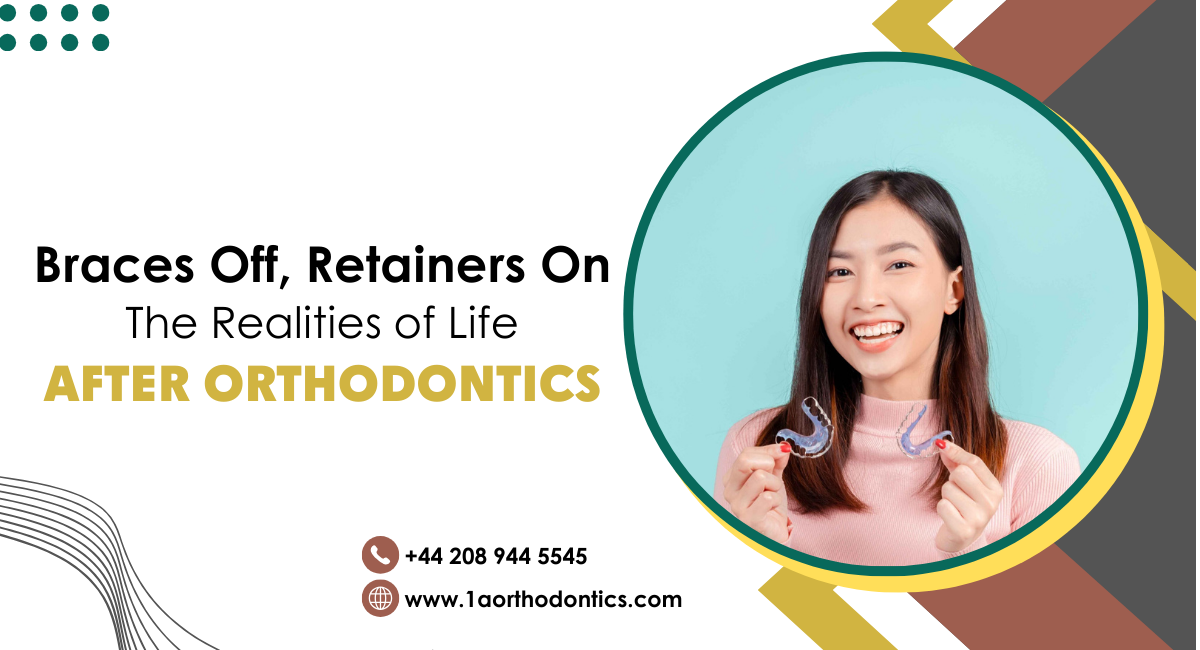So, the day finally came. The braces came off, your teeth look incredible, and you’re feeling like a brand-new person. I remember looking in the mirror and being half in shock, half in awe. Smooth, straight teeth after what felt like forever. But as much as that moment feels like the finish line, it’s really just the beginning of a whole new phase — the retainer stage.
No one really warns you how big the transition is from braces to a removable orthodontic retainer. It’s subtle, but important. And if you don’t stay on top of it, all that hard work (and money) can start to unravel quicker than you’d think.
The End of Braces Isn’t the End of the Journey
You’d think once the brackets and wires come off, you’re done. But no — the moment braces come off, your teeth start trying to shift back. This is just how the body works. Your bone and gum tissue need time to settle around your new tooth positions. That’s why removable orthodontic appliances like retainers are absolutely essential.
Adjusting to a Removable Retainer
If you’re moving from removable orthodontic braces to a retainer, it’s a weird transition. You’re used to feeling something fixed in your mouth 24/7. Now, you’ve got this clear or wire retainer that you take in and out — and it feels fragile at first. I remember panicking the first time I dropped mine in the sink.
At first, it’s a bit of a chore. You’ve got to remember to wear it every night (or day, depending on your plan), keep it clean, and not lose it. The number of mates I have who’ve accidentally binned their retainers at Nando’s… let’s just say: always bring the case.
Cost Isn’t Just a One-Time Thing
Here’s a truth bomb no one gave me early on — the cost of removable retainers isn’t just a one-off. You might need replacements over time. They wear down, or you might misplace one. I’ve gone through two in three years. The cost varies depending on where you go, but you’re usually looking at anywhere from £100 to £300 per retainer. It’s worth budgeting for this in the long term.
Types of Removable Retainers
There are a few different types out there, and what you get depends on your treatment and your orthodontist. The two big ones are:
– **Essix Retainers**: These are the clear, plastic ones that fit snugly over your teeth. Think Invisalign-style trays. They’re pretty invisible, which is great.
– **Hawley Retainers**: These have a plastic base and a thin metal wire that runs across your teeth. Slightly more old-school, but durable and easier to adjust.
Each has its pros and cons. Essix looks better but can crack more easily. Hawleys last longer but are more noticeable. Your orthodontist will usually recommend one based on what’ll work best for your specific case.
Cleaning and Care
I didn’t realise how gross retainers could get until mine started smelling like an old lunchbox. If you don’t clean them properly, they pick up bacteria, plaque, and just… odours. Not the vibe. I use a soft toothbrush, cool water, and a bit of unscented soap. Avoid boiling water — I learned that the hard way and warped my first one.
Wearing It Isn’t Optional
If I had a pound for every time someone told me they stopped wearing their retainer after a few months and now their teeth have moved, I’d have enough to replace everyone’s retainer. Seriously, it happens all the time. Wearing your removable appliance consistently is what keeps everything in place. I wear mine nightly, and it’s second nature now.
The Emotional Shift
What surprised me most was the emotional side of it all. Going from braces to retainers feels like a graduation of sorts. You’ve got the smile you worked hard for, but now you’re responsible for keeping it that way. I found myself smiling more in photos, laughing without covering my mouth — all the small things that add up. It’s empowering, but it also comes with a bit of pressure to stay disciplined.
Choosing the Right Provider Matters
The team you choose makes a big difference, especially with follow-up care. I went with 1A Orthodontics and they didn’t just send me off with a retainer and a wave. They booked me in for reviews, answered my nervous questions, and helped when I lost my second retainer abroad. That kind of support really makes the whole journey smoother — especially when you’re adjusting to removable orthodontic appliances.
So yeah, the braces coming off is a big moment — but it’s not the end of the road. Retainers are a long-term part of the process, and honestly, they’re not that bad. They’re just part of the new normal when it comes to maintaining your smile. Get into a routine, keep it clean, and don’t skip nights. It’s a small effort compared to what you’ve already gone through.
And if you’re just starting out or somewhere in the middle of your journey, remember this: it’s all worth it in the end. Every click of a retainer case, every night you wear it — it’s just part of keeping that smile you worked so hard to get.
Long-Term Habits Make All the Difference
One thing I didn’t expect? The shift in habits. You don’t just go back to your old ways once the braces are gone. You get more aware of your oral hygiene, more disciplined. Retainers need care, and so does the rest of your mouth. Brushing twice a day isn’t just a good idea — it’s crucial. Flossing too. The healthier your gums and teeth, the longer your results last.
And yeah, sometimes I forget. Life happens. But a night or two here and there isn’t the end of the world. It’s about the bigger picture — staying committed to the smile you invested in, both emotionally and financially.

